You may have heard of the Greek “evil eye”. But did you know that this concept, which is quite common in contemporary Greek culture, goes back thousands of years? Let’s find out more about this ancient Greek belief.
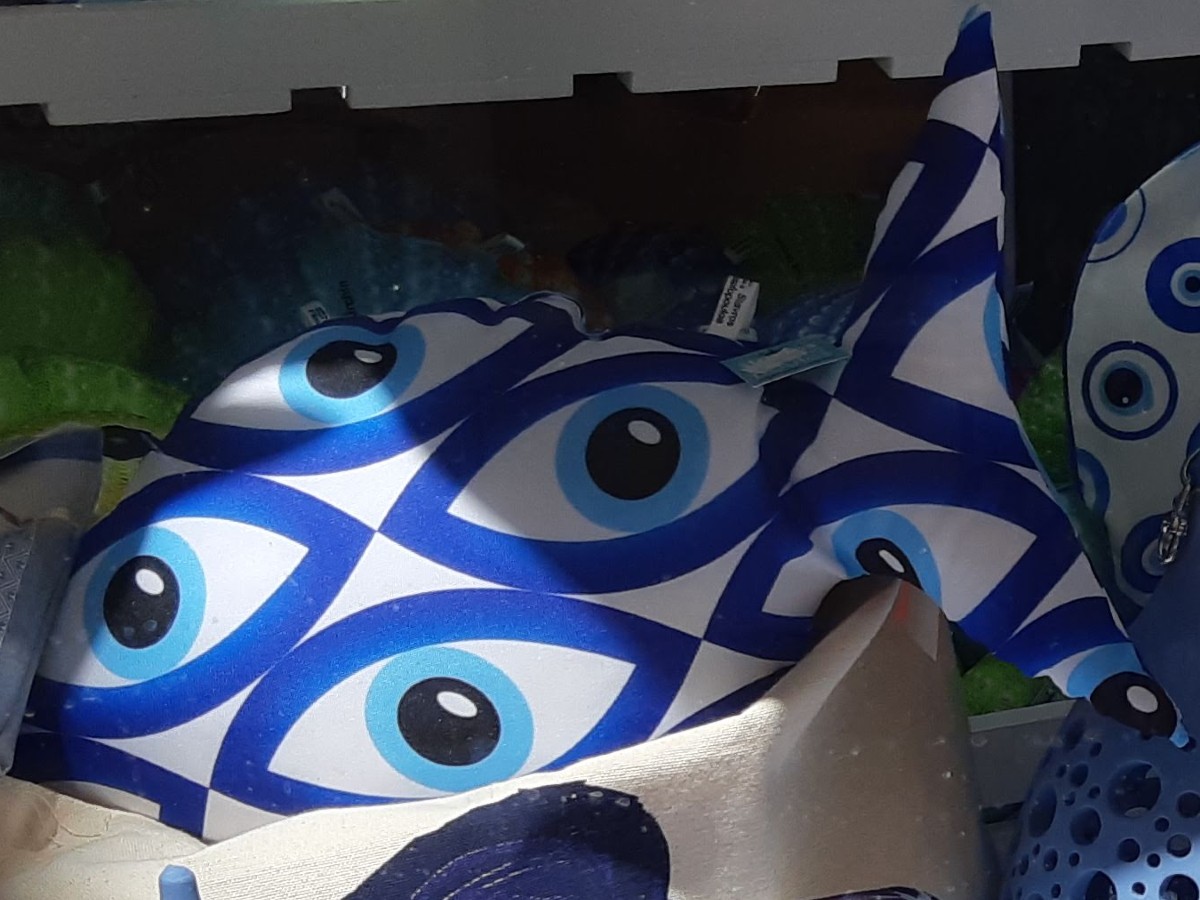
The Greek evil eye: Mati
The evil eye is a widespread concept around Greece. Since ancient years, people have believed that a person can harm other people, animals or even inanimate objects by sending off negative energy.
This is often a result of envy, jealousy or other negative feelings.
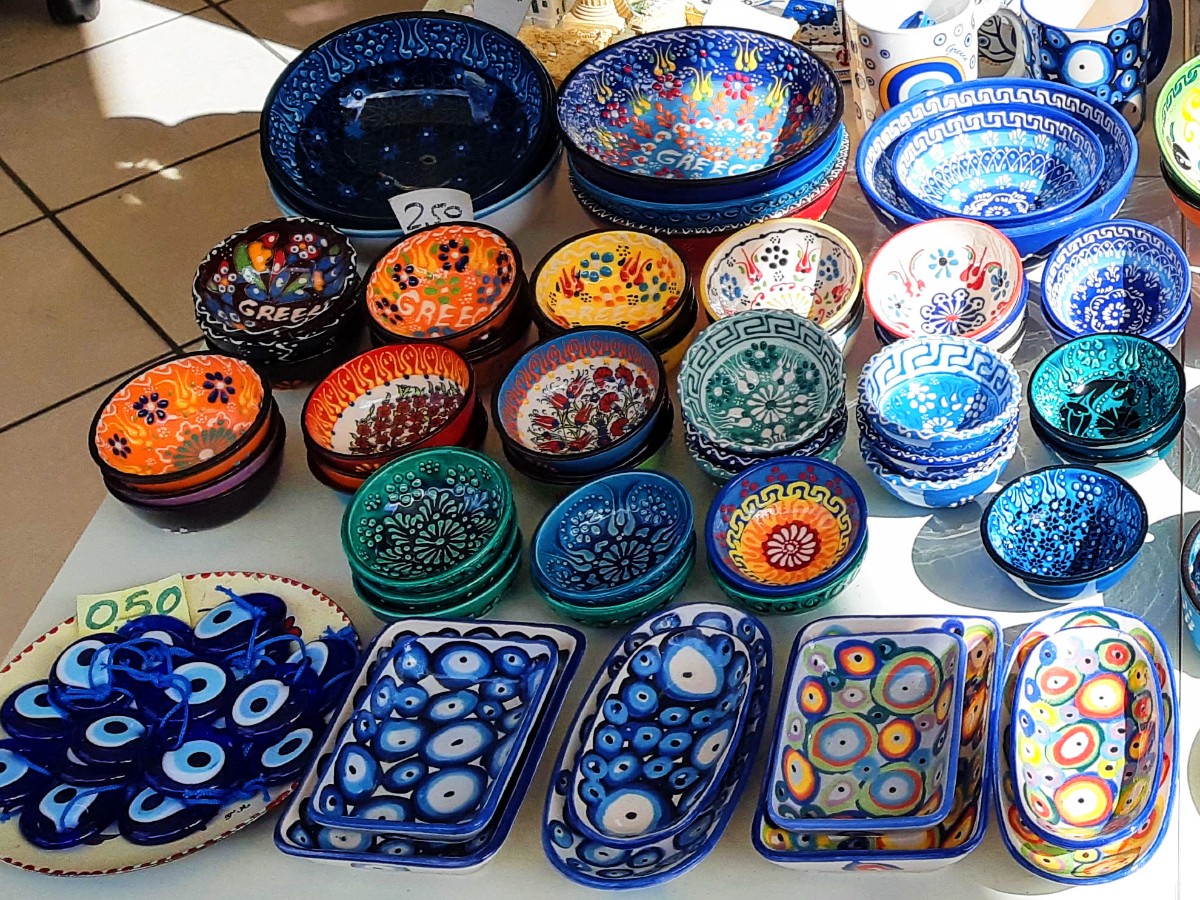
The affected person can feel bad for no apparent reason. Common physical symptoms include dizziness, nausea, headaches, extreme tiredness, and an overall feeling of malaise.
According to tradition, anyone with a malevolent glare can pass on the evil eye curse.
However, people with blue or green eyes, are thought to transmit them more frequently, even if they have no evil intentions whatsoever.
Truth, superstition, or plain nonsense? Let’s find out more about this common belief, and all you need to know about evil eye charms!
Ancient gods and supernatural powers
For several millennia, people have believed in the presence of spiritual, unknown forces, which often dominate nature and the world. This has always been a convenient way to rationalize natural phenomena that couldn’t be explained otherwise.
As an example, the ancient Greeks attributed magical powers to some figures of their history and mythology, such as the 12 Gods of Mt Olympus.
Demons, magicians and sorcerers were – and still are – common across many cultures, in the Mediterranean region and other areas of the world.
The Greek evil eye in Ancient Greece
Apart from gods and demons, people also believed that bad energy can be transmitted from one person to another, and more specifically through a stare.
The concept of the evil eye dates back to the ancient world, and is often thought to originate from ancient Greece. This is based on the presence of eye paintings on Greek drinking vessels from the period of classical antiquity, 6th century BC.
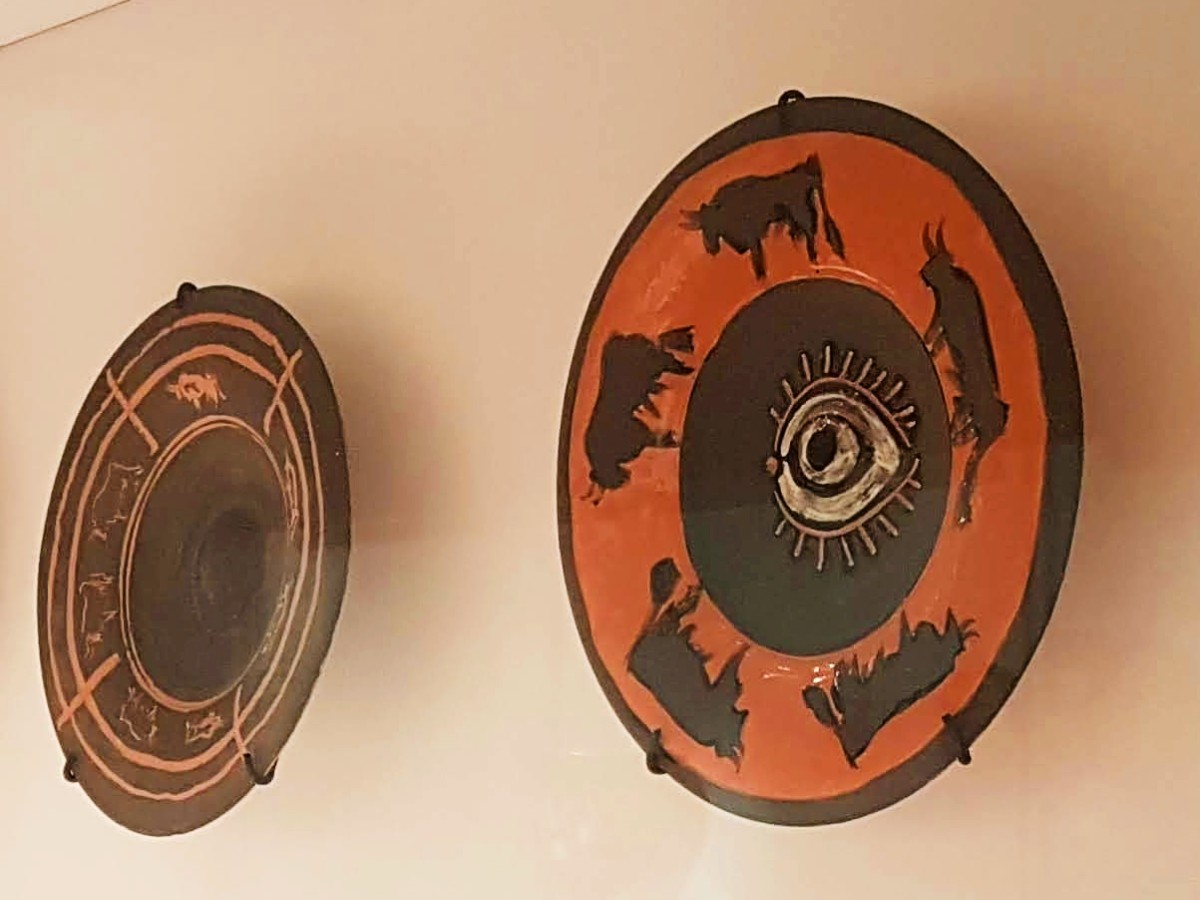
The painted eyes may have been meant to ward off the evil spirits that could enter the body when wine was consumed. They are called apotropaic, from the ancient Greek word αποτρέπειν, which means to block, or deter.
Other apotropaic symbols and practices in Ancient Greece include amulets, scary depictions like Medusa’s head, and numerous phallic symbols, like the ones found in Ancient Delos.
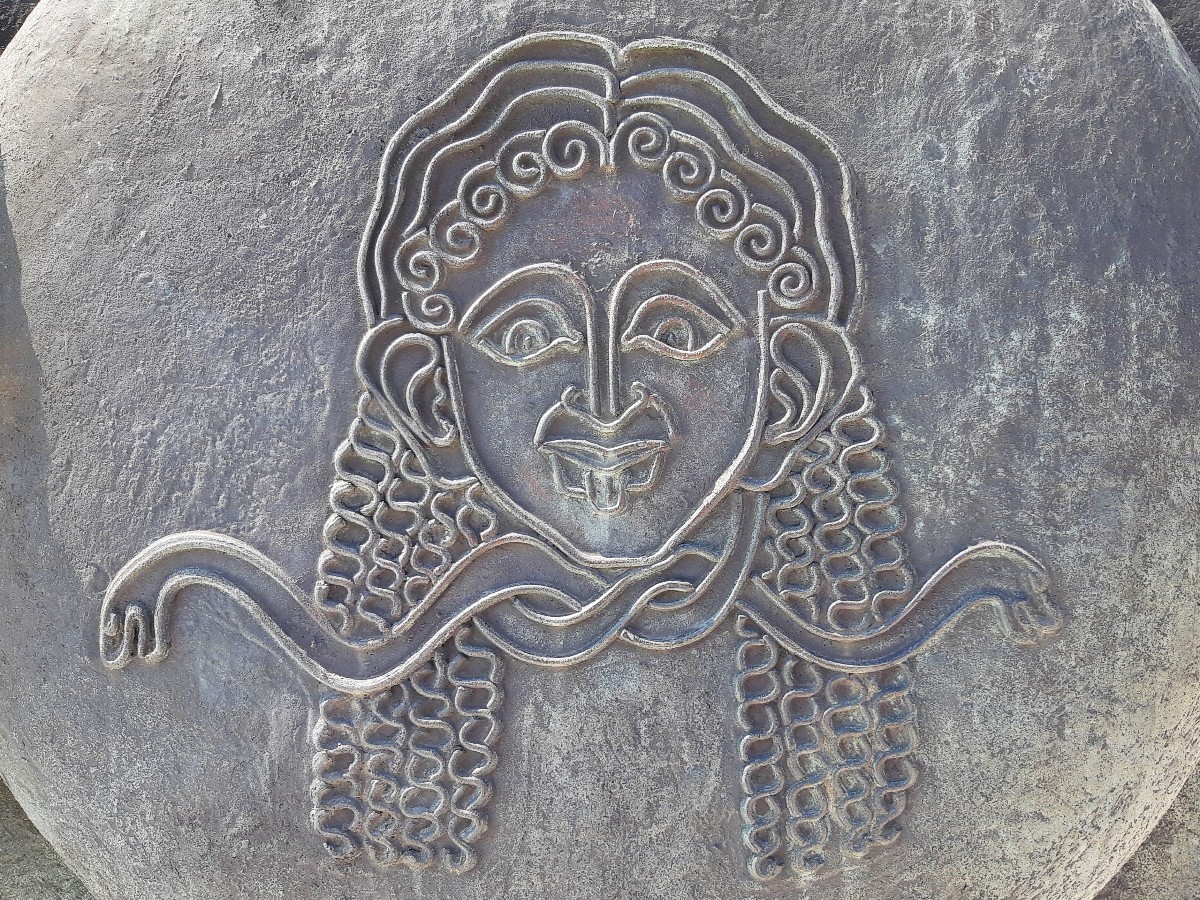
These pieces were believed to have talismanic power, and protect their owner from the evil stare. They all served the same purpose: to attract the person’s evil gaze, distracting them from casting their spell.
During the classical era, painted eyes were also a common theme on boats sailing around the Aegean Sea and the Greek islands, to protect them from harmful powers and help guide the ship through potential hazards.
Evil eyes and deadly rays
Several classical authors, like Hesiod, made a reference to the evil eye. In the 1st century AD, the Greek philosopher Plutarch attempted to give a scientific explanation.
In his work, Symposiacs, he explained that the human eye could radiate negative energy. This could affect, and potentially even kill, weak creatures like babies, young children and small animals.
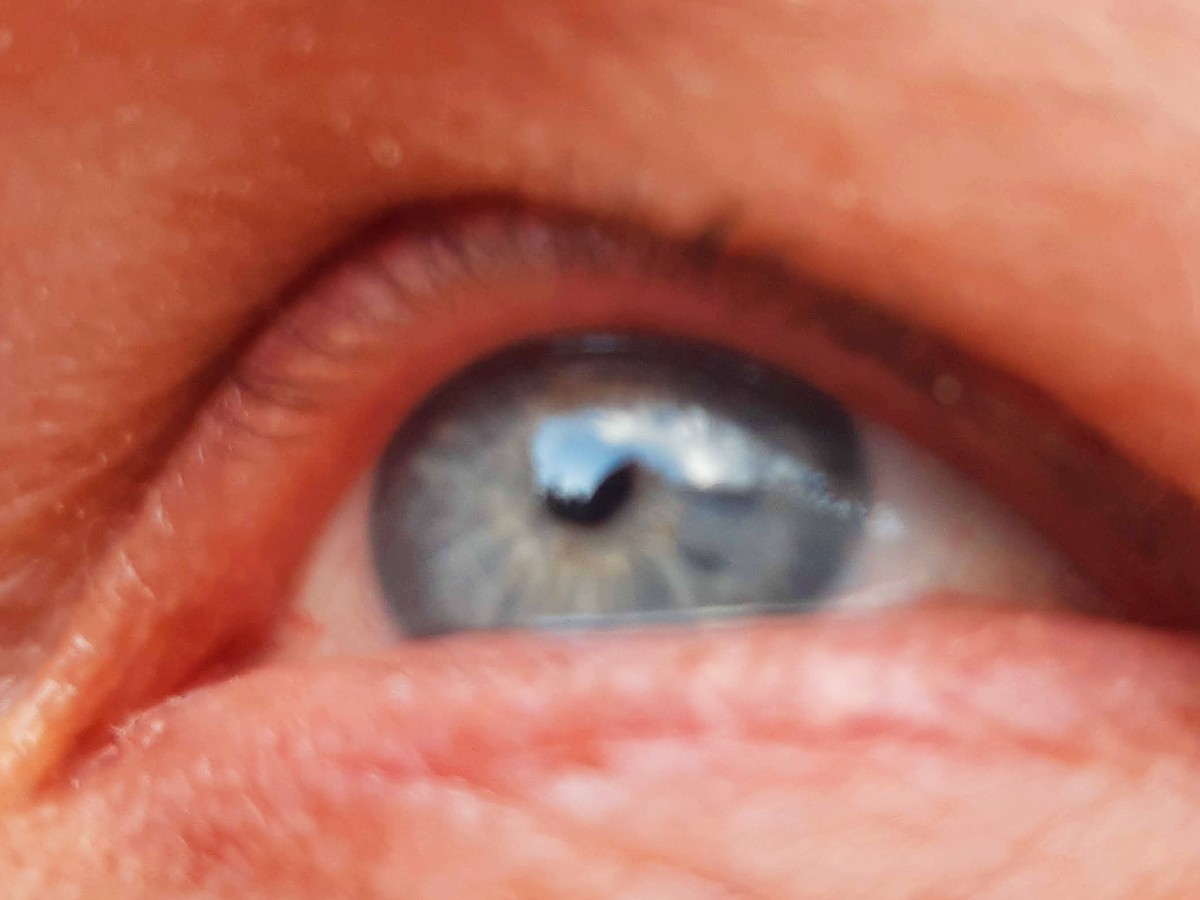
According to Plutarch, people from certain regions of the world, as well as people with blue eyes, were better at casting the evil spell. This was probably due to the fact that light colored eyes were uncommon around the Mediterranean at the time.
The origins of the evil eye are outside Greece
So, is this belief in the evil eye uniquely Greek? Of course not. Since the ancient times, several cultures have believed that an evil stare can cause bad luck, an illness, or even death.
The evil eye existed in the whole region of Mesopotamia, especially Babylonia, Assyria and Chaldea. This historical region spreads across today’s Iraq, Kuwait, parts of Iran, Syria, and Turkey.
In fact, references to the evil eye in these areas appear a few centuries before the classical era in Greece. So, while there is a theory that it was Alexander the Great who spread the evil eye concept as he made his way to the East, it’s not certain.
And let’s not forget the Egyptian Eye of Horus, a powerful symbol for protection against the power of the evil, going back thousands of years. Among other places, this was painted on boats – which might be where Greeks took the idea from!
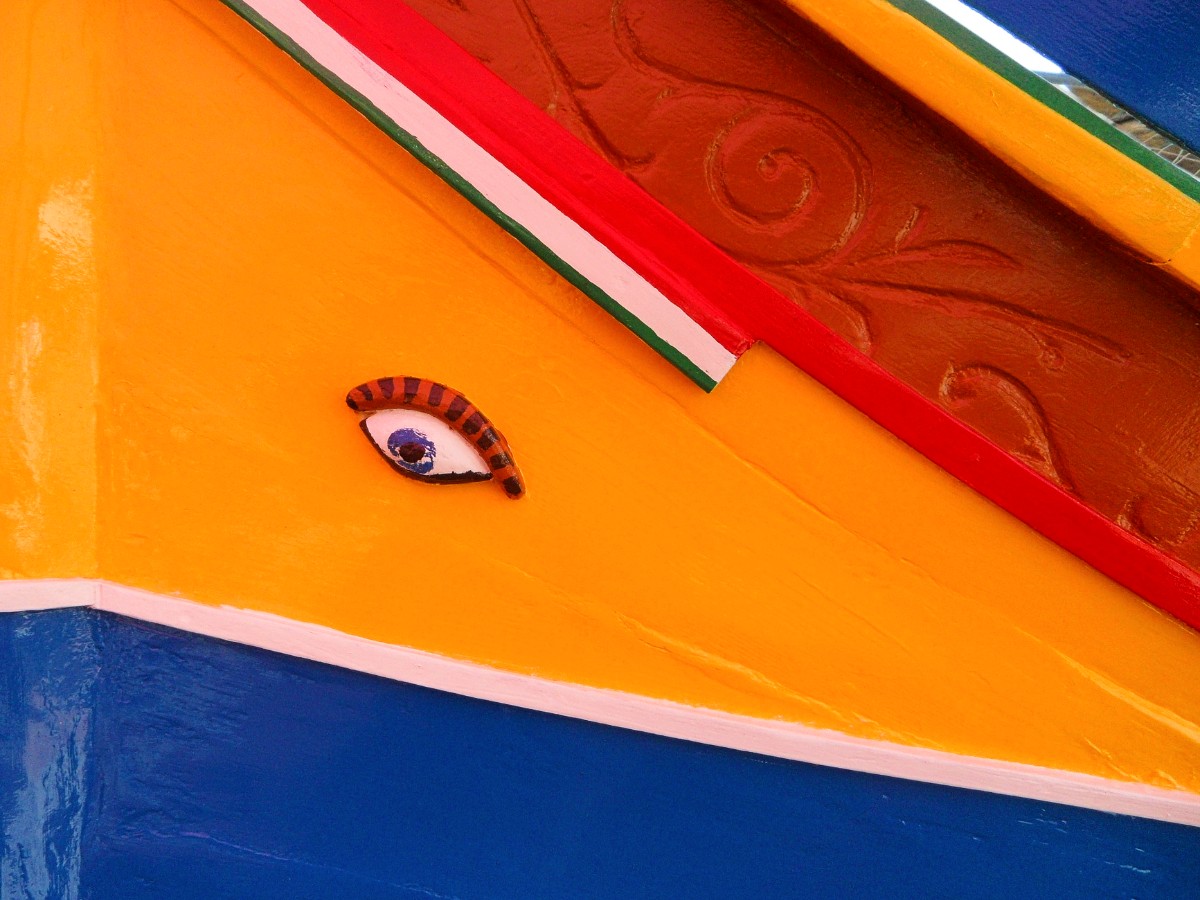
Painted eye on a boat in Marsaxlokk, Malta
Today, the culture of the evil eye appears in most of the Mediterranean, the Balkans, the Middle East, West Asia, several countries in East and West Africa, and most of Latin America.
Who does the evil eye affect in Greek culture?
As mentioned earlier, the evil eye is more likely to affect certain categories of people, especially women. A newborn baby, a young, pretty girl, or a pregnant woman are more susceptible to the rays of bad energy.
The person receiving the evil stare will typically feel ill. A baby might keep on crying for no apparent reason, and a young girl may feel dizzy, nauseous, upset or confused.
This is not to say that other categories of people, including older children and men, cannot be affected by an evil look. Ultimately though, it might also depend on whether someone believes in this tradition.
How to protect someone from negative energy – The matohantro
Now that we have a better understanding of the Greek evil eye, let’s find out how to protect ourselves from the negative vibes and jealousy!
There are many protective measures against the evil eye in Greece. The most common method consists of wearing some evil eye jewelry. This is called matohantro in Greek, and is also referred to as mati.
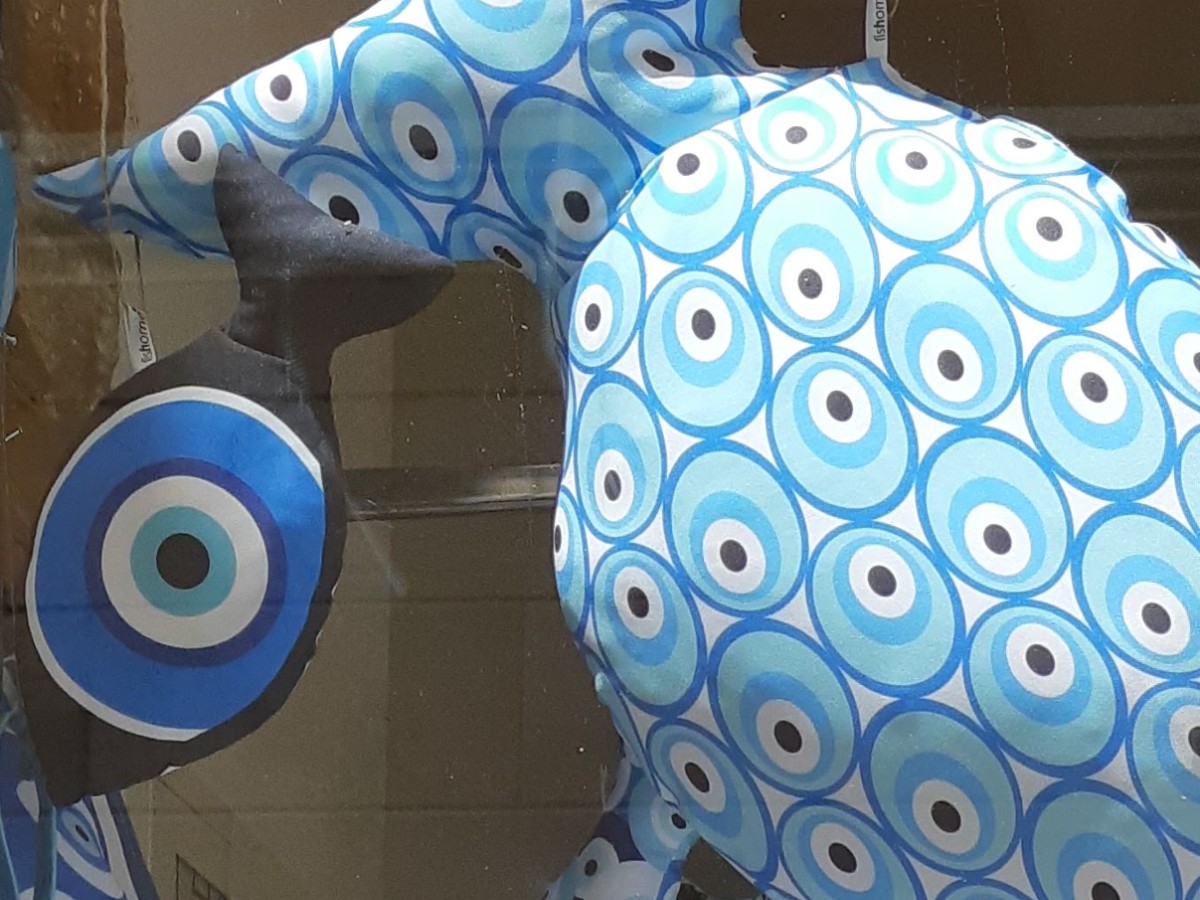
If you’ve ever been souvenir shopping in Greece, you will have seen things like an evil eye ring, an evil eye bracelet or a similar form of evil eye talismans.
Usually, evil eye beads are made out of blue glass or porcelain. The concentric blue and white circles and black dot resemble a blue eye, typical of the person casting the curse.
Items and symbols identical or similar to the Greek matohantro are used in many other countries. For example, you will find the Nazar in Turkey and the Middle East, and the Hamsa in many different parts of the world.
Getting rid of the evil eye curse
And what if, despite wearing a blue bead or evil eye charm, someone still gets the evil eye?
In this case, Greeks have a special ritual known as xematiasma. This is the act of taking the evil eye away from the person who has been affected. The person performing the ritual recites a special prayer.
Anyone who knows the secret prayer can take the evil eye away. However, rather few Greeks are familiar with these prayers, as there are certain limitations in passing them on.
According to some local traditions, the prayer can only be passed on to a person of the opposite gender, and only on a Good Friday, before Easter. Each healer can only reveal the prayer up to three times in their lives, as otherwise it will lose its power.
The xematiasma ritual
During the xematiasma ritual, the person who knows the special prayer will pray quietly in their mind, for a few minutes.
Depending on the strength of the curse, both the healer and the affected person may end up yawning, or even crying in silent tears.
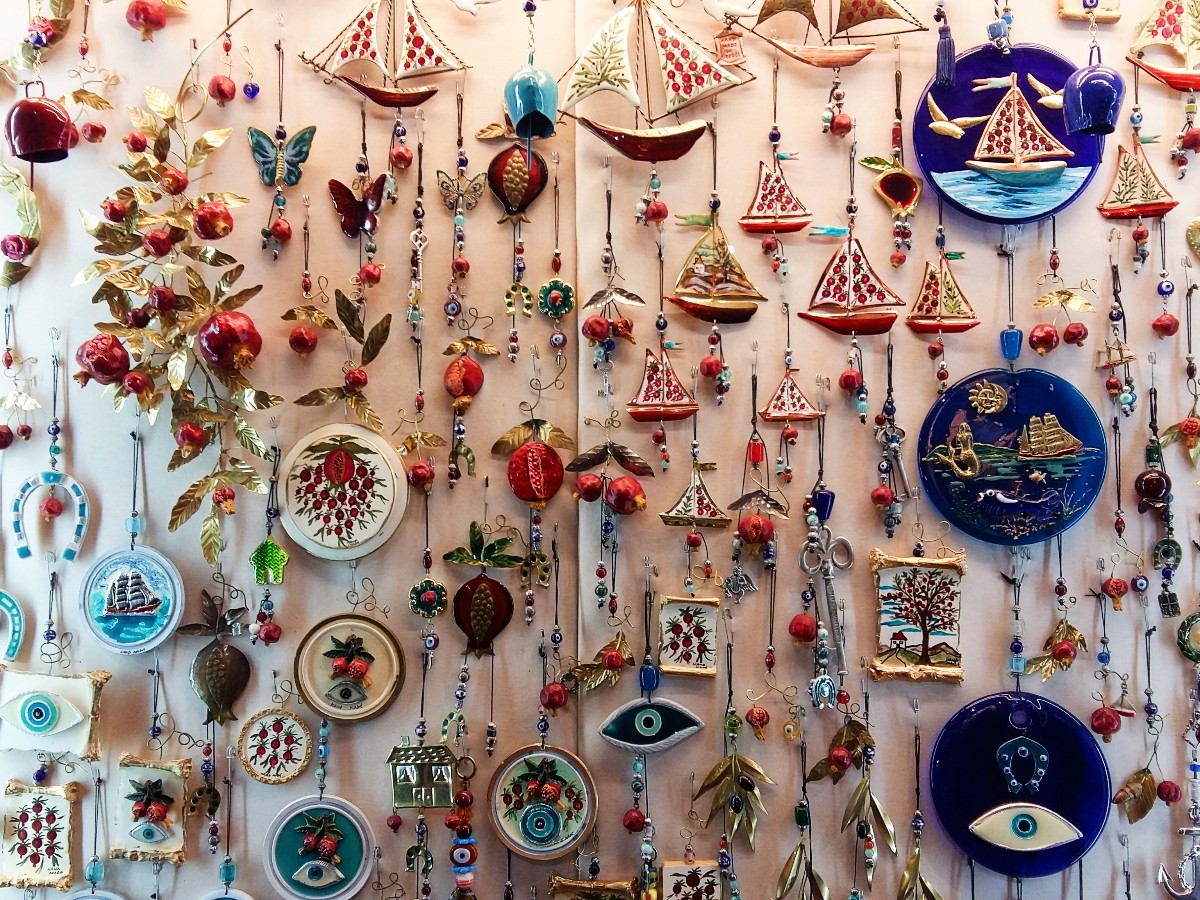
Some versions of xematiasma include the use of olive oil. For this purpose, the healer pours one or more drops of olive oil into a glass or plate of water.
Due to their physical properties, the two substances normally don’t blend. However, if a person is affected by the evil eye, the olive oil will completely dissolve into the water.
The evil eye and Greek Orthodox religion
Given that this common belief is ancient, and therefore pagan, we could safely assume that the Greek Orthodox religion doesn’t acknowledge the evil eye. Right?
Well, not exactly. According to the church, if a person feels ill for no apparent reason, this is the work of evil spirits and demons, who are all servants of the devil.
The Greek Orthodox church has some special procedures to ward off the evil spell. Apart from prayer, the church confronts them with the Holy Water (agiasmos) and the Holy Mystery of Unction (efchelaio).
Surely, the fact that both the common xematiasma and the Unction use olive oil, is no coincidence!
Greek Orthodox symbols
According to the Greek Orthodox church, the cross is the most powerful symbol to protect someone from all bad things.
Religious icons, small pieces of holy rood, and bottles of Holy Water are also used for protection. If you ever visit the big church in Tinos island, you will notice dozens of people filling up bottles to take home with them.
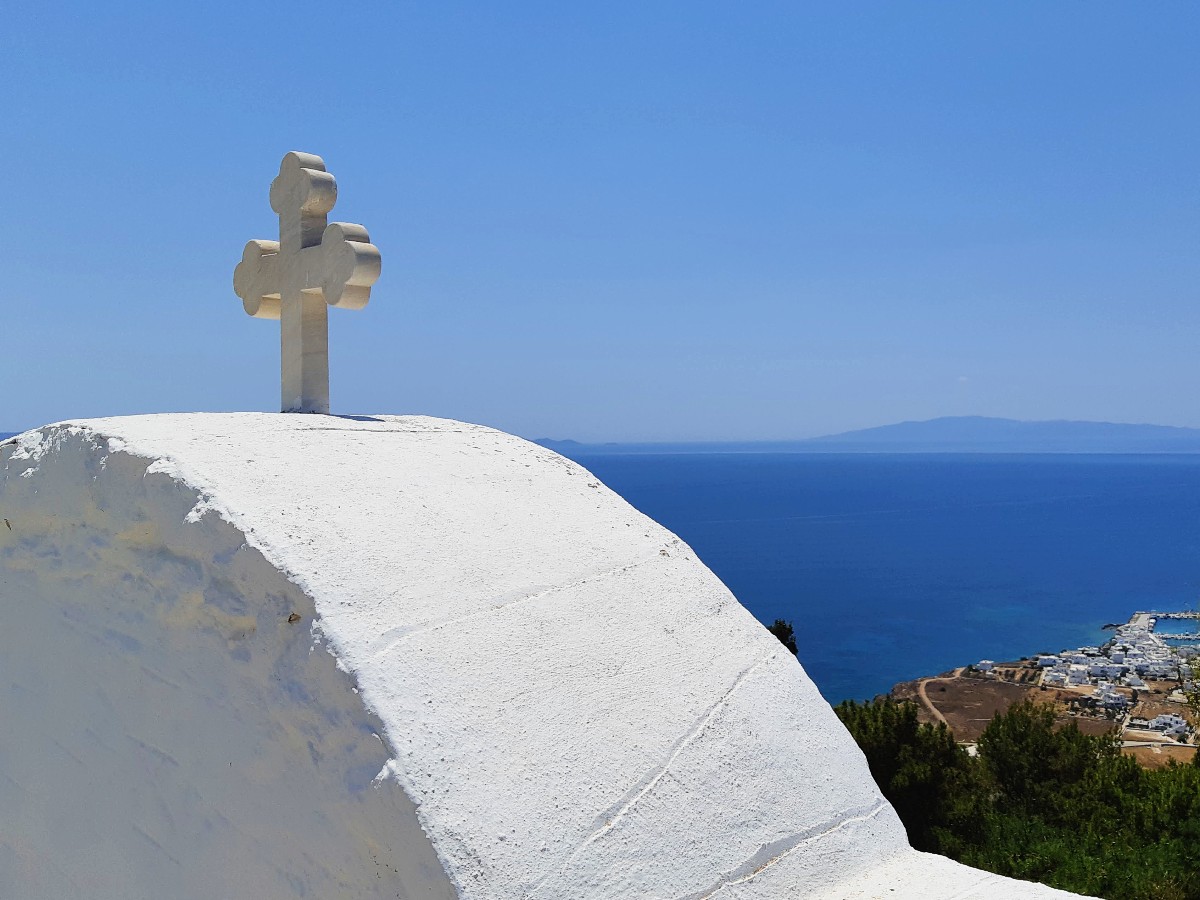
However, it’s not uncommon for babies to receive a small blue bead, along with a cross, during their baptism and christening. This is one of these cases where religion and Greek tradition go hand-in-hand.
Other ways to keep bad energy away
So, are there any other ways to keep the bad spirits away apart from amulets, glass beads, crosses and prayers? Of course!
Another popular tradition is spitting. This goes back to Ancient Greece, when athletes used to spit during the ancient Olympic Games for good luck.
Moreover, every Greek person you ask will remember their great-grand aunts spitting on them “for protection”. All this is probably related to the well-known antiseptic properties of spit.
Another popular habit across several cultures has to do with the well-known phrase “knock on wood“.
Ancient Greeks used to knock on tree trunks to ask for the protection of the Dryads and Hamadryads, the tree nymphs in Greek mythology. Moreover, by knocking on wood, we can distract someone from their bad thoughts.
Greek brides were used to hiding scissors in their wedding dresses. It was a symbolic way to prevent uninvited slander, which might come from older women or spinsters.
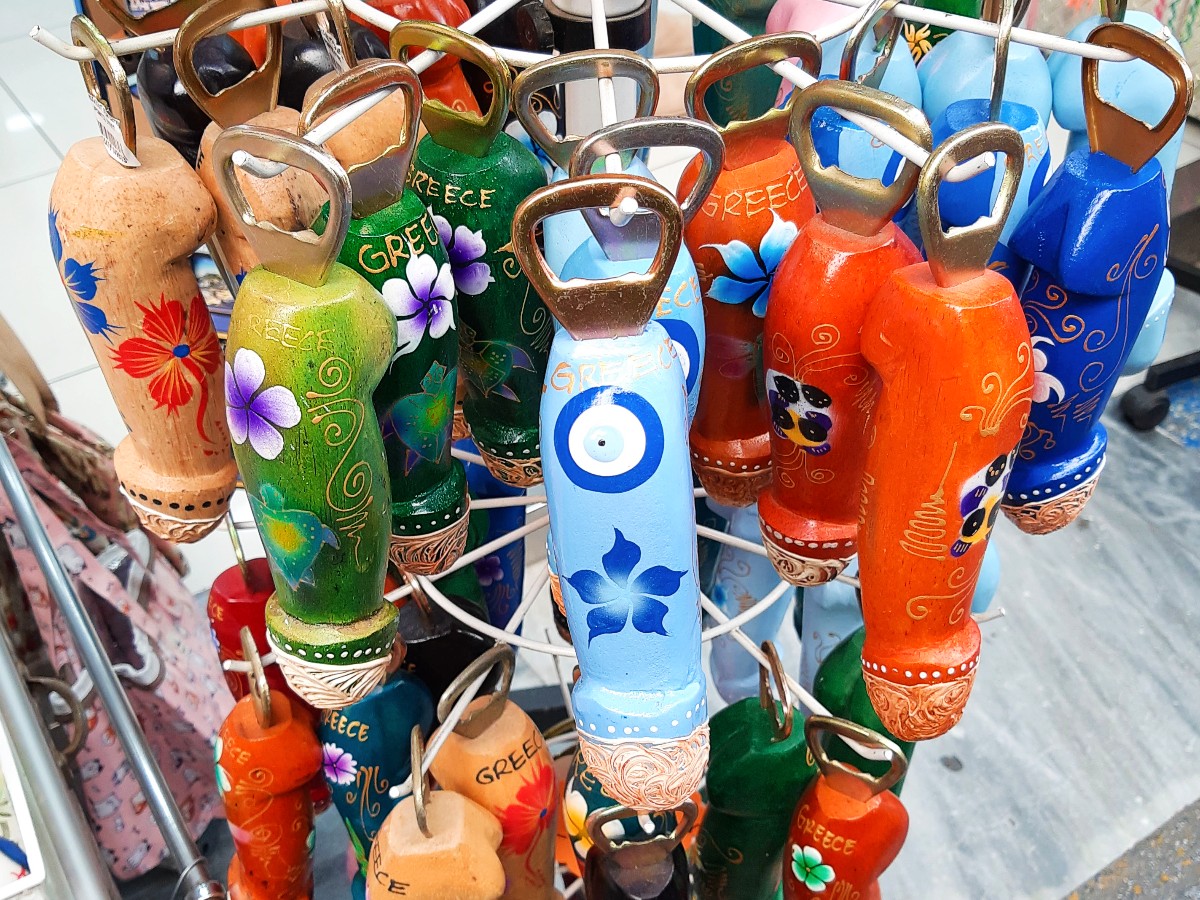
And while phallic symbols are no longer widely used, if you are so inclined, you can easily buy funky, inexpensive bottle openers around the tourist areas all around Greece.
Some final geekery about the Greek evil eye
As stated earlier, the word we commonly use in Greece to describe the evil eye is mati, which literally means “eye”. Another word is vaskania, which was also used in Ancient Greek to signify jealousy or defamation.
The modern word “fascination” has its origins in the Latin word “fascinum”, which in turn comes from the ancient word vaskania. And guess what? “Fascinum” was the word commonly used for the phallic charm. Fascinating!
Today, the word “fascinate” is synonym to charm, enchant, overpower, spellbind, and bewitch. Without a doubt, there is a supernatural element to this ancient concept.
FAQs about the Greek evil eye and the evil eye symbol
Here are a few answers to common questions about the evil eye symbol and evil eye amulet:
What do you call the evil eye in Greek?
There are a few different Greek words referring to the evil eye. ‘Mati’, literally meaning ‘eye’, is the most common one, while another one is ‘vaskania’.
What is the meaning of the Greek evil eye?
The evil eye is the transmission of negative energy from one person to another. It is believed that the person possessing the evil eye can cause bad luck or general malaise to another person, just by looking at them.
Is the evil eye a Greek thing?
The evil eye culture is common in many countries around the world. Apart from Greece, you can find this concept in various countries in the Middle East, Asia, Africa and Latin America.
Is it OK to wear the evil eye?
Wearing an eye charm, like a bracelet or necklace, is supposed to protect people from evil stares, bad luck and misfortunes.
Where should I put the evil eye in my house?
Traditionally, Greek people use the evil eye more on their person, rather than in their homes. Still, some people place charms at their house’s entrance, to protect from bad luck and negative emotions.
What’s the best Greek evil eye protection?
The best protection against the Greek evil eye is a combination of an evil eye bead (or similar talisman) and a Greek yiayia or great-grand auntie, who knows how to take the evil eye away! Any Greek child has likely experienced that at some point in their lives!
More guides on Greek culture
Hope you enjoyed this article and I’ve answered your question about what does the evil eye mean, the evil eye origin, and evil eye amulets! Have a look at these other ones:
- 12 Greek philosophers who changed the world
- A myth about how Ancient Athens took its name
- Interesting facts about the Greek flag
- The OXI day in Greece
- Why are buildings in the Cyclades painted blue and white?
- Basic Greek phrases
- 20 common Greek curse words
- Christmas in Greece
- The best SIM card for Greece

Hi! I’m Vanessa from Athens, and I love researching my country’s traditions. I happen to know a few people, all of them women, who can do the xematiasma ritual, and I’ve had the chance to observe it more than once. All I can say is, how on earth can olive oil blend with water? I’d love to see what you think of the Greek evil eye, so feel free to leave a comment below! Follow my FB page for more info on Greece and Greek culture.

you either beive ein the Cross or the evil eye but not both as the church says. Its like having the cross and the Hindi and the Buddhists and all religions around your neck. You are either with 1 or with none.
Hi! Is the creator of this website an Econopouly? I just did a Google search for information about the evil eye and this was one of the top searches.
Hi – I am Vanessa from Athens – you can read more about me here!
Γειά σας!
I feed stray cats outside my home in Greece, but living as I do on quite a busy road, I worry, because every now and then a cat trying to cross the road is killed by a passing car. A few years ago I created a road sign to warn motorists of the presence of cats in the area, but malevolent neighbours reported it to the authorities and it was taken down. Now I’m reduced to creating an apotropaic eye sign, although I don’t really believe in the superstition. I like to think it might give the cats a statistically better chance, as in a Schrödinger Cat experiment slightly skewed towards the survival of the cat, say 51% to 49%.
Vanessa thank you for this well written and well researched article . Really enjoyed it. I live summers in Greece and was told by Greeks the Mati came from Turkey. I disputed this because I have see numerous Mati on Bronze Age pottery and engravings in the Cyclades.
I would like to know the specifics of the Greek eye curse removal. By that I mean, the specific words of the prays, the specific to do & order of the whole clearing ritual. My yiayia has been gone many years & I have no one else to ask.
I don’t know how to do it either! I’m assuming you speak Greek? Google the phrase “πως θα μαθω να ξεματιαζω” and you’ll see lots of results.